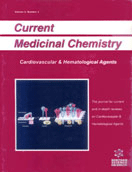Abstract
The protein C pathway is a major regulator of blood coagulation, since it controls the conversion of prothrombin to thrombin through a feedback inhibition mechanism. Protein C circulates in plasma as an inactive zymogen and is activated on the surface of endothelial cells by the thrombin-thrombomodulin complex, a process that can be further enhanced when protein C binds to its membrane receptor, the endothelial-cell protein C receptor. Activated protein C (APC) is then released from the complex, binds protein S and inhibits thrombin formation by inactivating coagulation factors Va and VIIIa. The importance of the protein C anticoagulant pathway is emphasized by the increased risk of venous thromboembolism (VTE) associated with protein C and protein S deficiencies, the factor V Leiden mutation, and reduced circulating APC levels. The protein C pathway also plays a significant role in inflammatory processes, since it prevents the lethal effects of E. coli-associated sepsis in animal models and improves the outcome of patients with severe sepsis. APC seems to display anti-apoptotic and neuroprotective activities. Thus, it reduces organ damage in animal models of sepsis, ischemic injury, endothelial cell injury, or stroke. Further research will hopefully widen the current therapeutic perspectives in all these illnesses, where these effects might play a crucial role in their treatment. This review will summarize the mechanisms that contribute to these biological activities of the protein C pathway.
Keywords: protein c, activated protein c, thrombomodulin, endothelial protein c receptor, venous thromboembolism, inflammation, apoptosis, neuroprotection
 6
6













